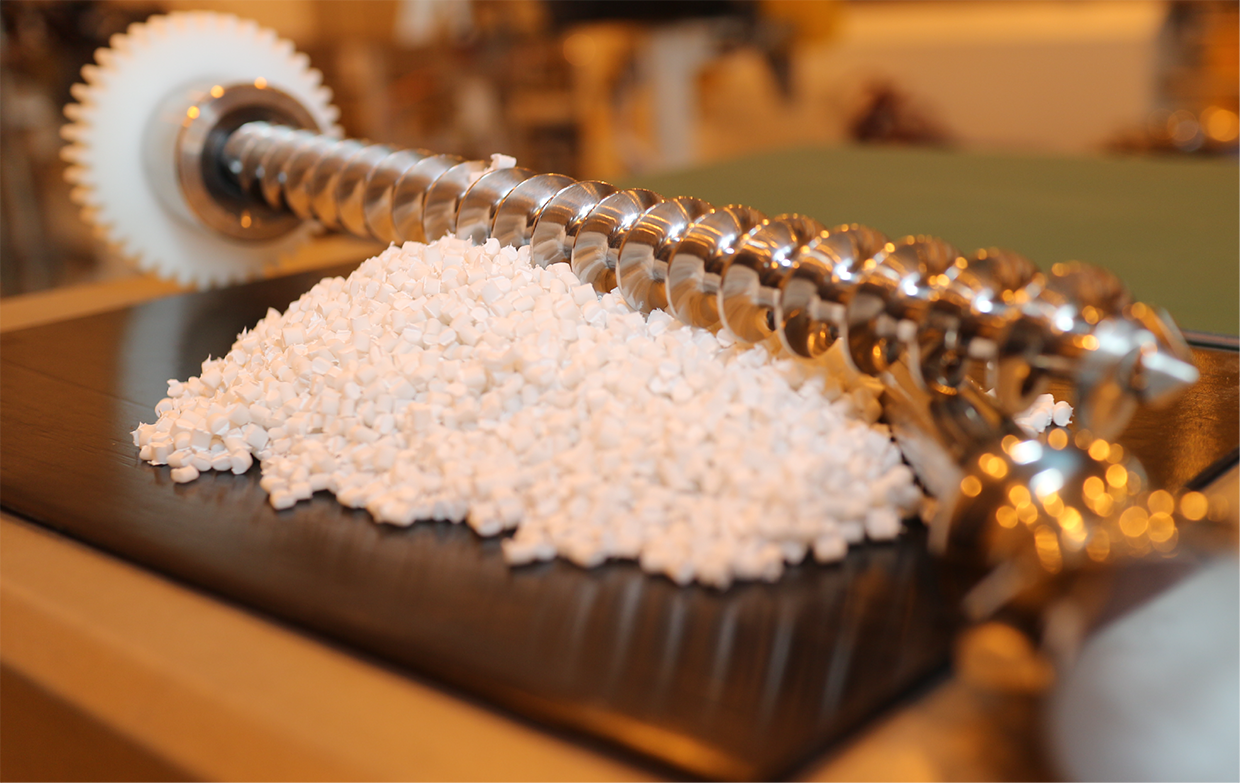Plastic Molding Process

Sunday August 1, 2021
Plastics play a pivotal role in our daily life. Before plastics become products that we enjoy using, they need to go through one fundamental process: molding, where plastic resins or powder are shaped with different methods based on the specifications and functionality of a product.
Molding process varies depending on the kind and size of finished products, the quantity to make as well as the types of plastics used. Nonetheless, all processes consist of three basic procedures as follows:
Heating
Plastic resins or powder are melted so that molten plastic can be fed to a mold.
Shaping
Molten plastic is shaped into a desired form and thickness.
Cooling
The shaped plastic is cooled so that it returns to its solid state and holds its shape.
Plastic Molding Process
A key molding process for plastics, injection molding can be applied to the manufacturing of different kinds of plastics, ranging in size and shape. In this process, plastic resins or powder are put into an injection molding machine, using a screw to carry the material to be melted and injecting the molten plastic into a mold with a cooling system. Then, the product will be ejected from the mold. Key to this process is the plastic injection molding machine, which consists of three parts working together. These are:
1. The injection unit feeds molten plastic into the barrel and passes it to the nozzle. It injects the plastic into the mold and maintain the pressure. Basic components of the injection unit include a nozzle, a screw, a barrel, a heater, a hopper, a hydraulic cylinder and its pistol, and a drive motor.
2. The clamping unit holds the mold’s two parts, opens and closes the mold, applies force to close the mold, cools the product and ejects it from the mold.
3. The mold shapes molten plastic into a product.
How Injection Molding Machine Functions
1. Plastic resins are fed and accumulated in front of the screw.
2. The screw stops rotating when there is enough plastic for injection. They hydraulic system pushes the plastic through the nozzle.
3. The mold opens once the plastic is molded and the product drops down. The screw retracts for the next round of injection.
The injection molding machine usually uses the same electric motor to power the hydraulic pump. The rotation and movement of the screw may result from the hydraulic pressure or from a separate electric motor.
The injection molding machine is an indispensable piece of equipment for plastic molding. As it can manufacture products in large quantities and is less complex than other methods, injection molding is the most popular molding process today and the cost of an injection molding machine itself is not too high. Most importantly, the process is highly effective and efficient in meeting production specifications, resulting in products that meet the needs of modern living.
Translated Source: Manual for Energy Saving at Plastic Plants by the Department of Industrial Works, Ministry of Industry
TTo maximize the efficiency of an injection molding machine and prolong its service life, maintenance should be done regularly. Regular maintenance also helps to increase operational safety and reduce waste from production process.

For maintenance purposes, the high-standard X PURGE purging compounds are powerful for screw and barrel cleaning and can reduce cleaning time while enhancing production efficiency. The purging compounds are an excellent option for both injection molding and extrusion machines, effective in removing black spots and reducing defects from previous color contamination during the molding process. With X PURGE, there is no need to worry about dirty screws and barrels as the purging compounds can thoroughly get rid of plastic leftovers and prevent encrustation of impurities.